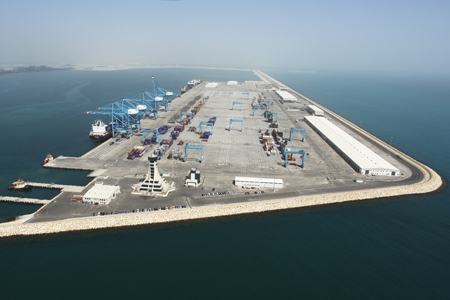World Maritime Day 2024 is on Sunday, September 29, 2024: Can anyone in Egypt explain this maritime disaster?
Sunday, September 29, 2024 is World Maritime Day 2024. World Maritime Day World Maritime Day
As an Amazon Associate I earn from qualifying purchases.

Thanks alot , I never know abt this b4, and i found good link, here it is:
'The USS Liberty': America's Most Shameful Secret
by Eric S. Margolis
NEW YORK – On the fourth day of the 1967 Arab Israeli War, the intelligence ship 'USS Liberty' was steaming slowly in international waters, 14 miles off the Sinai Peninsula. Israeli armored forces were racing deep into Sinai in hot pursuit of the retreating Egyptian army.
'Liberty,' a World War II freighter, had been converted into an intelligence vessel by the top-secret US National Security Agency, and packed with the latest signals and electronic interception equipment. The ship bristled with antennas and electronic 'ears' including TRSSCOMM, a system that delivered real-time intercepts to Washington by bouncing a stream of microwaves off the moon.
'Liberty' had been rushed to Sinai to monitor communications of the belligerents in the Third Arab Israeli War: Israel and her foes, Egypt, Syria, and Jordan.
At 0800 hrs, 8 June, 1967, eight Israeli recon flights flew over 'Liberty,' which was flying a large American flag. At 1400 hrs, waves of low-flying Israeli Mystere and Mirage-III fighter-bombers repeatedly attacked the American vessel with rockets, napalm, and cannon. The air attacks lasted 20 minutes, concentrating on the ship's electronic antennas and dishes. The 'Liberty' was left afire, listing sharply. Eight of her crew lay dead, a hundred seriously wounded, including the captain, Commander William McGonagle.
At 1424 hrs, three Israeli torpedo boats attacked, raking the burning 'Liberty' with 20mm and 40mm shells. At 1431hrs an Israeli torpedo hit the 'Liberty' midship, precisely where the signals intelligence systems were located. Twenty-five more Americans died.
Israeli gunboats circled the wounded 'Liberty,' firing at crewmen trying to fight the fires. At 1515, the crew were ordered to abandon ship. The Israeli warships closed and poured machine gun fire into the crowded life rafts, sinking two. As American sailors were being massacred in cold blood, a rescue mission by US Sixth Fleet carrier aircraft was mysteriously aborted on orders from the White House.
An hour after the attack, Israeli warships and planes returned. Commander McGonagle gave the order. 'prepare to repel borders.' But the Israelis, probably fearful of intervention by the US Sixth Fleet, departed. 'Liberty' was left shattered but still defiant, her flag flying.
The Israeli attacks killed 34 US seamen and wounded 171 out of a crew of 297, the worst loss of American naval personnel from hostile action since World War II.
Less than an hour after the attack, Israel told Washington its forces had committed a 'tragic error.' Later, Israel claimed it had mistaken 'Liberty' for an ancient Egyptian horse transport. US Secretary of State, Dean Rusk, and Joint Chiefs of Staff head, Admiral Thomas Moorer, insisted the Israeli attack was deliberate and designed to sink 'Liberty.' So did three CIA reports; one asserted Israel's Defense Minister, Gen. Moshe Dayan, had personally ordered the attack.
In contrast to American outrage over North Korea's assault on the intelligence ship 'Pueblo,' Iraq's mistaken missile strike on the USS 'Stark,' last fall's bombing of the USS 'Cole' in Aden, and the recent US-China air incident, the savaging of 'Liberty' was quickly hushed up by President Lyndon Johnson and Defense Secretary Robert McNamara.
The White House and Congress immediately accepted Israel's explanation and let the matter drop. Israel later paid a token reparation of US $6 million. There were reports two Israeli pilots who had refused to attack 'Liberty' were jailed for 18 years.
Surviving 'Liberty' crew members would not be silenced. They kept demanding an open inquiry and tried to tell their story of deliberate attack to the media. Israel's government worked behind the scenes to thwart these efforts, going so far as having American pro-Israel groups accuse 'Liberty's' survivors of being 'anti-Semites' and 'Israel-haters.' Major TV networks cancelled interviews with the crew. A book about the 'Liberty' by crewman James Ennes' was dropped from distribution. The Israel lobby branded him 'an Arab propagandist.'
The attack on 'Liberty' was fading into obscurity until last week, when intelligence expert James Bamford came out with Body of Secrets, his latest book about the National Security Agency. In a stunning revelation, Bamford writes that unknown to Israel, a US Navy EC-121 intelligence aircraft was flying high overhead the 'Liberty,' electronically recorded the attack. The US aircraft crew provides evidence that the Israeli pilots knew full well that they were attacking a US Navy ship flying the American flag.
Why did Israel try to sink a naval vessel of its benefactor and ally? Most likely because 'Liberty's' intercepts flatly contradicted Israel's claim, made at the war's beginning on 5 June, that Eg

What is the world's longest piece of rope?
The World's longest piece of rope was made by Wesley and Charles Supine in Gibraltar, in 1842. It was made in a 'ropewalk' in the British Naval Dockyards, to create a barrier across the Straits of Gibraltar.
The rope was six inches in diameter, and 24 miles in length. Accurate measurement was impossible due to the rope's changing length with changes in humidity and tension.
It was designed to stretch from Gibraltar to the cape of Ceuta, on the African coast. A straight line between these points is 19 miles, but it was believed the rope would drift with the movement of the water, and would contract in warm weather. For strength, no splicing was to be used. A net twenty feet in depth was to be suspended from the main rope.
The rope was laid using a modified naval frigate with a large drum at the rear from which the rope would be unreeled. This is the same method that was used only a few decades later when telegraph cables began to be laid across the world's ocean floors.
Operation of a ropewalk calls for immense skill and judgment of the tension and speed, adjusting these for the water-content of the fibres. Construction began in early April and by June Charles, who was responsible for the ropewalk itself, was unwell. Wesley had been in charge of logistics, organising physical labour, supply of materials, etc. Wesley took control of the ropewalk between June and July, when Charles returned to work. Under Charles' hand the rope was completed in mid-September. By now it was not prudent to lay the rope, due to the frequency of storms and the adapted frigate's inability to cope with heavy seas. The decision was taken to lay the rope in the spring of the following year, which required the finished rope to be wintered in lard.
Charles Supine died of a fever on Christmas Day of 1842. His brother died on New Year's Day of 1843. Neither brother saw the frigate (HMS Mullingar) sail in March of 1843, slowly paying out the rope, with a squadron of warships to guard her.
The rope was tethered at Ceuta on 2nd April 1843, and it was found that less than one mile of spare rope remained. A section of the surplus rope is preserved in the Maritime Museum in Ceuta, which documents ocean navigation as far back as Portuguese exploration of the West coast of Africa. At the time of writing, the rope is believed to be undergoing conservation.
Weaving the net began within days of the April tethering and was completed in late May. The work proceeded rapidly since several vessels could work at once at different points along the rope. The barrier was destroyed in a storm in mid-June of 1843.

Who can answer this maritime question for me?
They tended to seek different prevailing winds at different latitudes in those days. The main knowledge Columbus had was not the roundness of the world, which was already known by educated people then, but rather his knowledge of winds and currents. He knew the wind blew mostly toward the west at one latitude and mostly to the east at another. However, sailing vessels, especially fore-and-aft rig boats, can sail partly against the wind. For example, if the wind is from the north, they can sail northwest or northeast, but not directly north. They can then zigzag their way north by going first northwest, then northeast and back again. This is called tacking.














